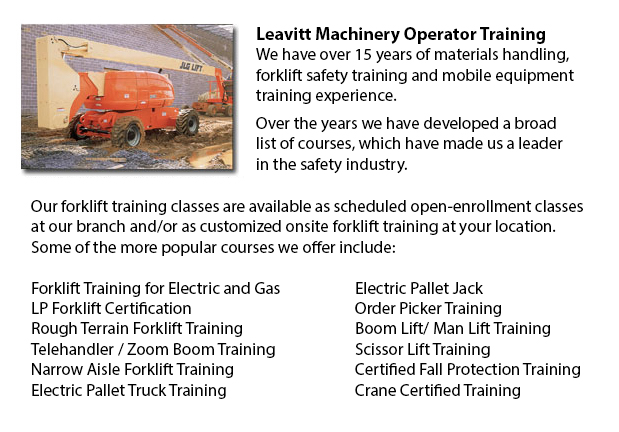
Oakville Boom Lift Certification - Using elevated work platforms allow for work and maintenance operations to be performed at elevated work heights that were otherwise not reachable. Boom Lift Certification Training teaches workers about the safe operation of scissor lifts and boom lifts.
Despite the variety in lift style, applications and site conditions, all lifts have the possibility for death or serious injury when operated unsafely. Falls, electrocution, crushed body parts, and tip-overs can be the terrible result of incorrect operating procedures.
To be able to avoid aerial lift accidents, boom lift operators should be trained by qualified workers in safely operating the particular kind of aerial lift they will be utilizing. Aerial lifts should not be be altered without the express permission of the manufacturer or other recognized entity. If you are leasing a lift, make certain that it is maintained properly. Before utilizing, safety devices and controls need to be checked in order to ensure they are working properly.
It is essential to follow safe operating procedures in order to prevent workplace incidents. Driving an aerial lift while the lift is extended should not be carried out, nevertheless, some models are designed to be driven when the lift is extended. Set outriggers, if available. Always set brakes. Avoid slopes, but when necessary utilize wheel chocks on slopes that do not exceed the slope restrictions of the manufacturer. Follow weight and load restrictions of the manufacturer. When standing on the platform of boom lifts, use a safety belt with a two-foot lanyard tied to the basket or boom or a full-body harness. Fall protection is not needed for scissor lifts that have guardrails. Never climb or sit on guardrails.
The boom lift certification course provides instruction in the following areas: training and certification; safety tips to be able to prevent a tip-over; slopes and surface conditions; inspecting the work area & travel path; stability factors; other tips for maintaining stability; weight capacity; leverage; pre-operational check; testing control functions; mounting a vehicle; safe operating practices; overhead obstacles and power lines; safe driving procedures; PPE and fall protection; making use of lanyards and harness; and avoid falling from the platform.
When successful, the trained employee will know the following: pre-operational inspection procedures; training and authorization procedures; how to avoid tip-overs; factors affecting the stability of boom and scissor lifts; how to utilize the testing control functions; how to use PPE and strategies to prevent falls.
-
Oakville Overhead Crane Safety Training
Oakville Overhead Crane Safety Training - Overhead crane safety training equips operators with skills and knowledge regarding crane safety measures, accident avoidance, materials handling, and machinery and stock protection. Trainees will learn the t... More -
Oakville Crane Training Schools
Oakville Crane Training Schools - Our various Mobile Crane Operation programs are designed for skilled operators who needs re-certification or certification, and for inexperienced individuals who are seeking their very first job as an operator of a c... More -
Oakville Overhead Crane Certification
Oakville Overhead Crane Certification - The overhead crane certification course is a course that is designed to help trainees, even though they have language or literacy limits. The course consists of a classroom theory part and a practical hands-on... More -
Oakville Forklift Training Programs
Oakville Forklift Training Programs - If you are searching for work as an operator of a forklift, our regulatory-compliant forklift training programs provide exceptional instruction in various types and styles of forklifts, classes on pre-shift inspe... More -
Oakville Fall Protection Ticket
Oakville Fall Protection Ticket - The number one cause of death in the construction business come from fall-related accidents. There is more possibility for fall accidents depending on the types of work being performed within your workplace. Thus, be... More -
Oakville Zoom Boom Training
Oakville Zoom Boom Training - Zoom Boom Training focuses on correctly training potential operators on variable reach forklifts. The training objectives consist of gaining the understanding of the machine's physics and to define the job of the operato... More -
Oakville Aerial Lift Ticket
Oakville Aerial Lift Ticket - A boom truck is often recognized by the cable and telephone company vans that have the elongated arm folded over their roofs. Commonly, a bucket-like apparatus sits at the extension of extendable arms. Often referred to... More -
Oakville Scissor Lift Training
Oakville Scissor Lift Training - Scissor lifts need to be operated competently to be able to protect the safety of the machinery and the safety of people in the workplace. Operators who are skilled are trained to drive the specific model of scissor l... More

Forklift Certification Oakville
TOLL FREE: 1-888-254-6157
Oakville, Ontario
forkliftcertificationoakville.com
Email Us
About Us


